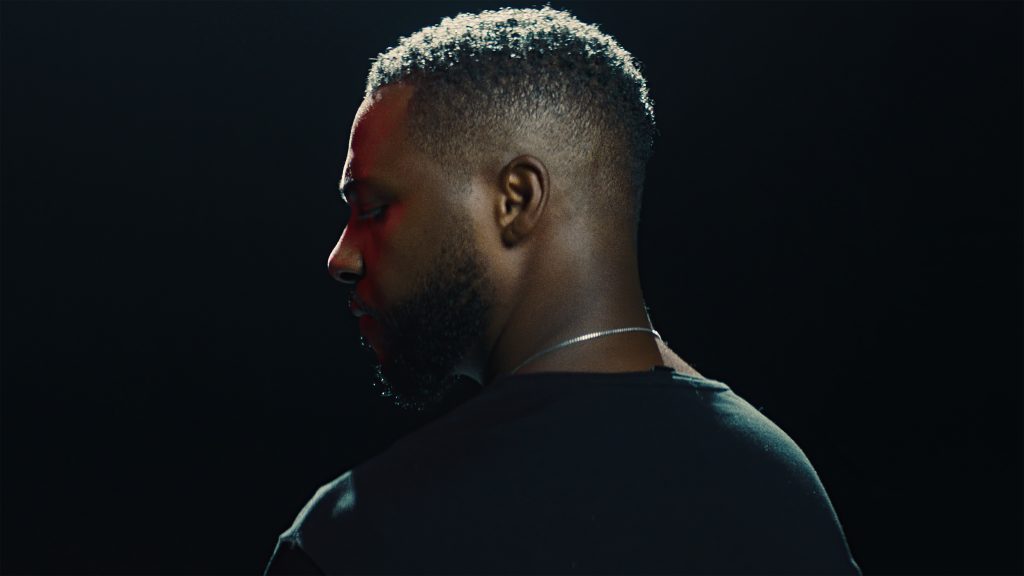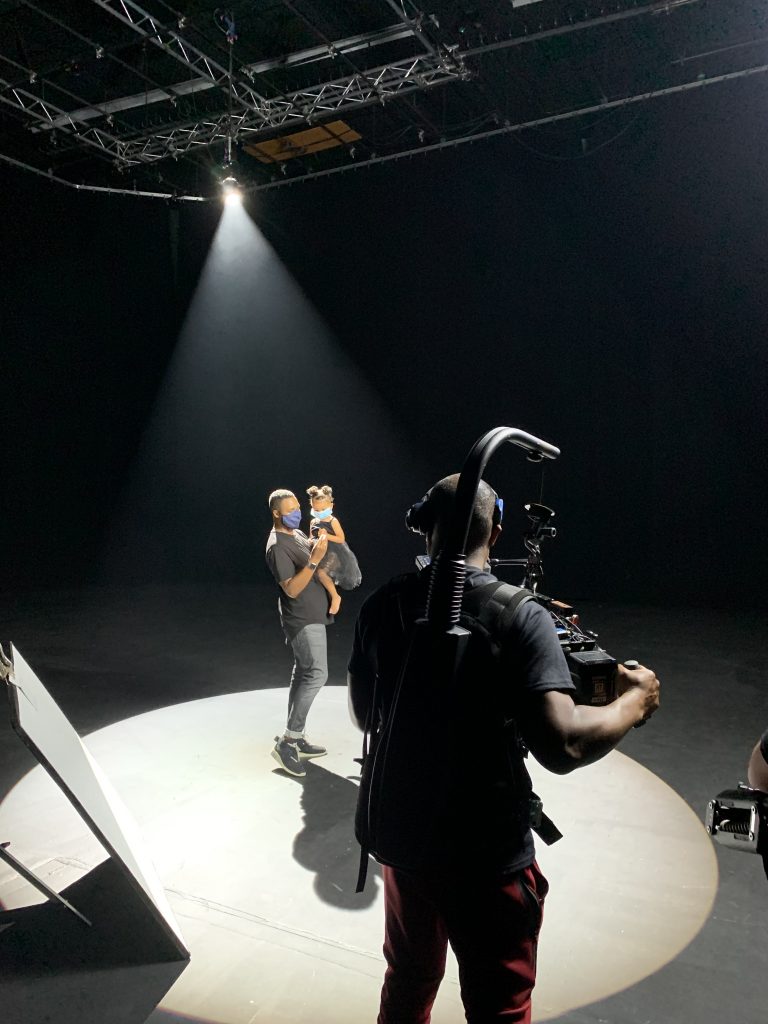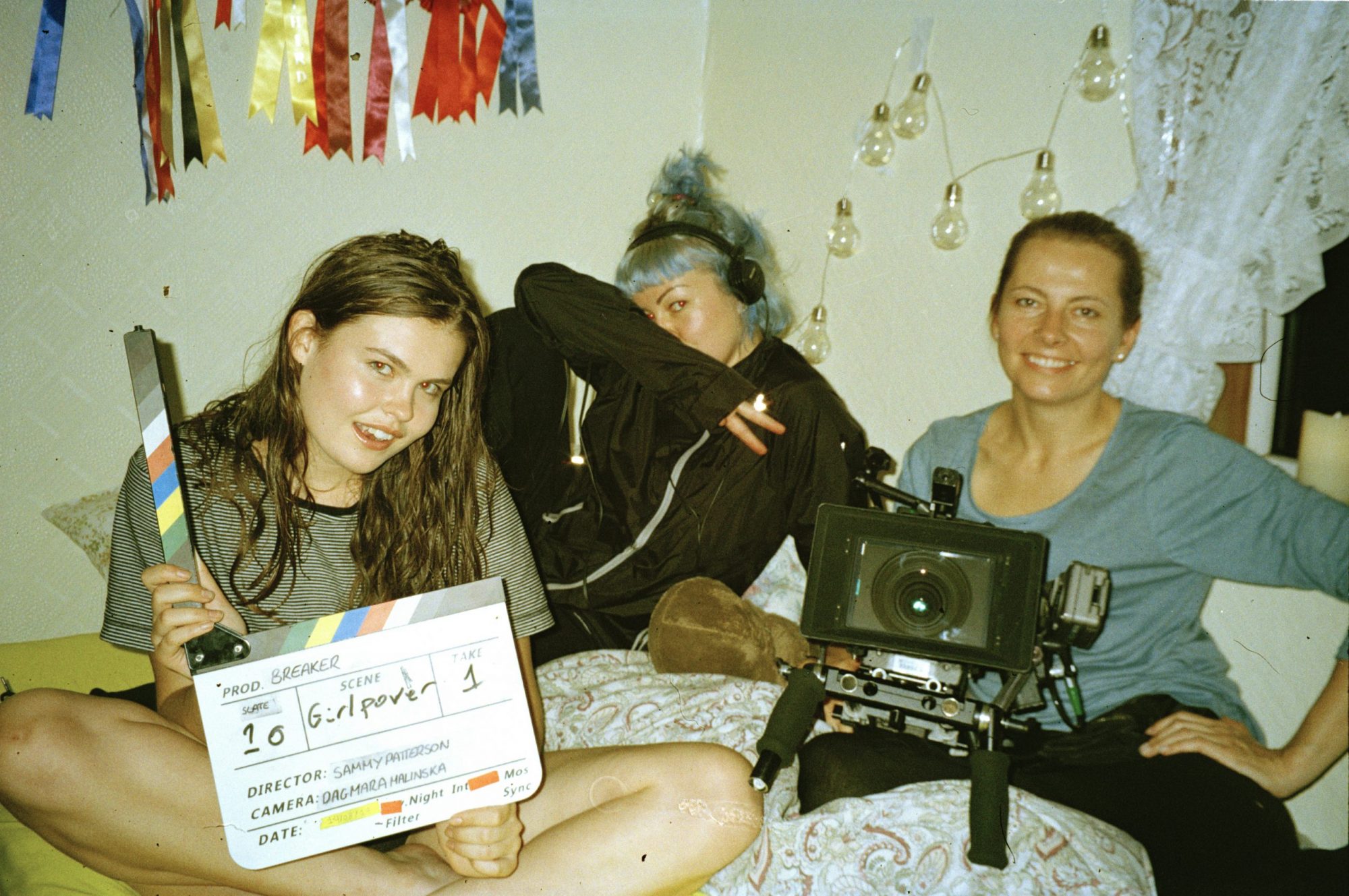Black Thoughts: An Invitation to Exchange Eyes
By Mallory Nicole Davis, Associate Editor

Watch Black Thoughts here.
“I would not have you descend into your own dream. I would have you be a conscious citizen of this terrible and beautiful world.” Ta-Nehisi Coates, Between the World and Me
In its stirring minimalism and expansive reach, Black Thoughts is a visceral feat. Clocking in at just under thirty minutes and deceptive in its apparent simplicity, this short will leave you longing to view it again.
The film begins with a confession. Writer, director and star, Dwayne Logan’s face first appears submerged in water so dark that it could be ink. His disembodied voice floats over the image as he breaks the water’s surface and the stillness of the frame. “Black thoughts. Drowning in a sea of Black thoughts.”
The next scene cuts to Logan, sitting alone and lit by a single white spotlight, otherwise engulfed by darkness. Through voice over, we are privy to his thoughts. His lyrical, stream of consciousness narration weaves the film together and allows him to bounce seamlessly from the past to the future, from the systemic to the intimately personal. Logan’s narrative voice carries an Afropessimistic deftness that is reminiscent of the likes of Ta-Nehisi Coates, Frank Wilderson III and Ibram X. Kendi. However, Logan is not satisfied with simply inviting the viewer to be a voyeur of his mind; he wants to “exchange eyes” with them, and the visual medium of film allows him to do just that.
The single, fixed spotlight that appears consistently throughout the film gives the impression of a stage and emphasizes the concept of performance—an engrossing expectation that preoccupies Logan’s thoughts and drives his actions. Notably, every time Logan enters the spotlight, he is invariably alone. With the exception of a cameo by his young daughter, we do not see Logan interact with or speak directly to any other person featured in the film. His isolation, even if only confined within his mind, is palpable.
While Logan is never seen sharing the spotlight, other nameless characters make appearances to animate his personal anecdotes. In contrast to Logan’s composed demeanor and rich interiority, these characters present as grating, hyperbolic stereotypes—including a white woman making a frenzied 911 call with a dog’s leash in hand and two shirtless, blindfolded black men frantically grasping for money, drugs and guns that are thrown at them from off screen. These vignettes are jarring until the viewer realizes their function. They exist to highlight the mundanity of brutality.

Layering the production even further, the film features historical images and footage that are intermittently projected onto the blackness that surrounds the constant of the spotlight. These clips span an incredible breadth of time—from photos of Marcus Garvey that punctuate Logan’s musings about expatriation to video footage of Akua Njeri describing the night of Fred Hampton’s death. However, Logan is deliberate and disciplined in his choices. He masterfully tests the viewer’s willingness to let their gaze be directed. Despite presenting confronting pieces of historical evidence, he situates himself as a reliable, sensible narrator with a voice that is more inquiry than accusation.
The real litmus test for Logan’s success in garnering enough trust to “exchange eyes” with the viewer comes at the top of the final act. After recounting a series of humiliating events, Logan makes another confession. He has become resentful, distrustful and angry. As tension mounts, we watch—for the first time—as he walks out of the spotlight and into the darkness, begrudgingly repeating the refrain, “racism does not exist.” Moments later, he reemerges in a suit and shades, smiling as he sings the Temptations’ “Just My Imagination (Running Away with Me).” It isn’t until he finishes the chorus that we see that there are tears rolling down his face. The moment is heart-wrenchingly absurd, but it is during this “performance” that we see the pain that Logan conceals, in lieu of being told about it.
Logan’s visual manipulation of darkness, light, staging and projection bring his narrative to life, but one of the most compelling devices he employs is visual symbolism. Water appears as a unifying thread that helps give his narrative intimacy and urgency. The film begins and ends with a shot of still water. This visual only appears in the film one other time, as the two shirtless, blindfolded black men fight each other in a vignette that conjures up the infamous battle royale scene from Richard Wright’s Invisible Man. Logan, however, injects subtle but poignant suggestions of water elsewhere in the film. We see him sweating profusely as he recounts boiling in the summer heat, while watching a white man take his shirt off without a care in the world for how he may be perceived. We watch him urinate on himself while reflecting on how a teacher once refused to let him use the restroom until he could no longer control his bladder, while she granted a “pretty white girl” permission with a smile. It’s hard not to be struck by the significance of water in this otherwise minimalistic production.

Within the first minute of the film, Logan states a desire that becomes the central question of the piece. “I wish there was a way that we could all exchange eyes for a moment. And maybe then, we would see.” He pauses and adds, “…maybe not.”
The rare beauty of this film—and what I believe sets it apart—is that Logan doesn’t strain to offer heavy-handed solutions to the problems that plague us. Instead, he lends us his eyes and extends a humble invitation to join him in asking the questions that beg to be ushered into the light.
Watch Black Thoughts here. Craving more films by Black Directors? We recommend watching Mr. Weekend, No Lye: An American Beauty Story and Since I Been Down. These films, among many more, can also be found here.

